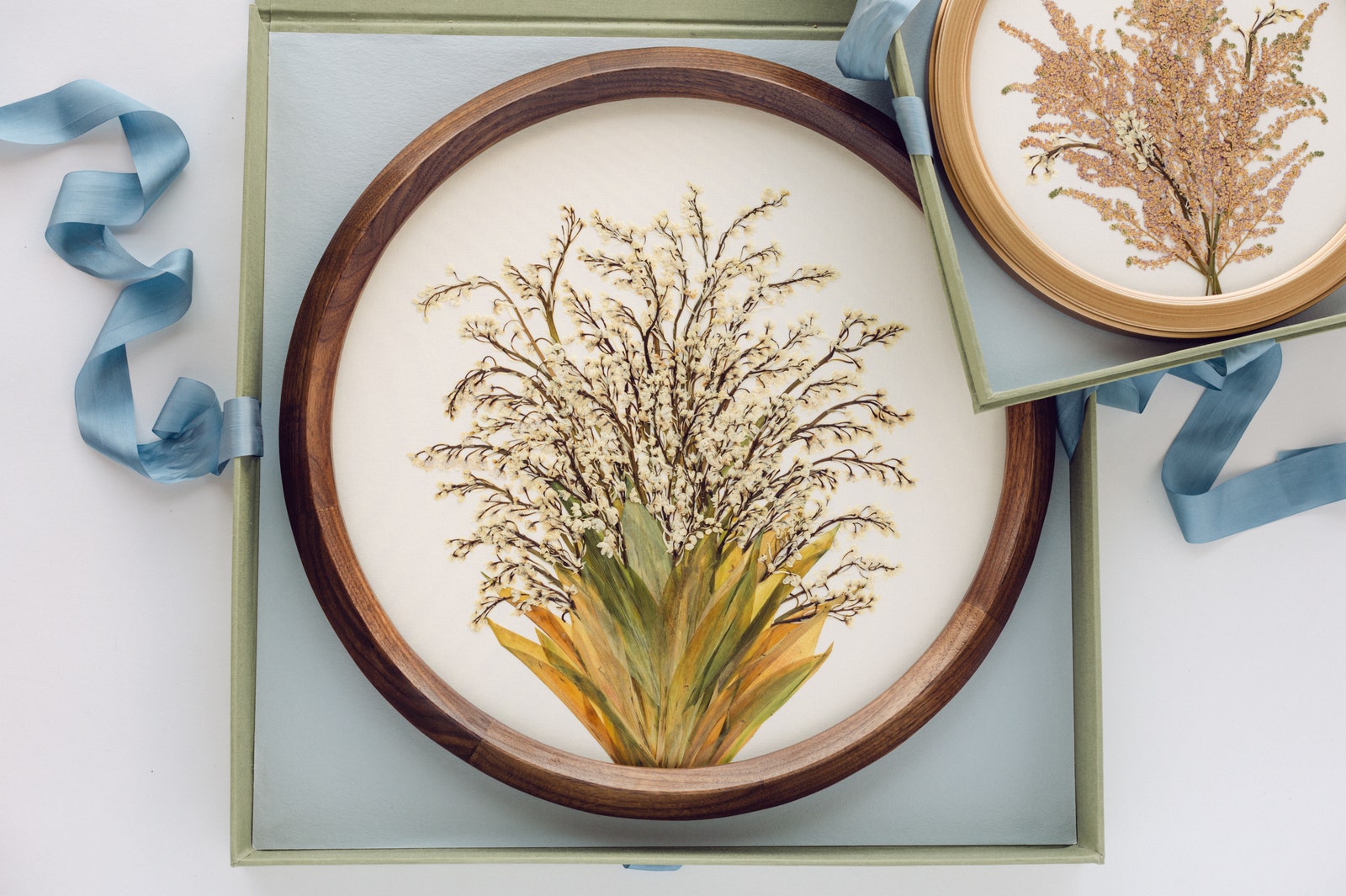Learning how to press flowers is not as difficult as you might think. The technique makes an ephemeral beauty eternal by flattening the daisies, pansies, violets, and wildflowers that color your garden and turning them into enchanting home decor. “Bringing the outside in is always a good idea,” says Penny Ann Schmidt, a botanical artist based in Rialto, California, and owner of by Penny Ann. “Not only is nature beautiful, but preserving flowers also opens a window into a memory,” she offers.
Schmidt admits that exploring the art form of pressed flowers may be daunting for newbies. “The right method of preservation can be hard to figure out,” she says, adding that DIY-ing without some knowledge of how a given plant will dry can result in a failed press. To ensure that your blooms retain their charm, we asked Schmidt and other floral experts to explain the different methods for how to press flowers.
How do you dry and preserve flowers forever?
Considering the simplest of strategies for how to press flowers, the book method is one of your best bets. This is likely the cheapest technique for creating your ideal flower art. Assuming you already have large books, scissors, and your favorite flowers, it’s free. Schmidt notes that while the book method is easy and accessible, there are certain plants—like thicker flowers—that might not turn out well when pressed by heavy books. It’s best to pick flowers that are smaller or thinner for the book method. “Large flowers with thick layers should be pressed in other ways. Also, plants that hold a lot of water shouldn’t be used, as they will soak through the page,” she explains.
Kate Blott, creative marketing manager at Atlas Flowers in London, suggests looking for recently bloomed flowers that are not too damp when you’re using the book method. Schmidt is a fan of thin flowers (like wildflowers) and open-facing varieties like geraniums or coneflowers.
The best kinds of books to use to create your dry flowers masterpieces? “Have on hand a set of old encyclopedias or large dictionaries,” advises Linda Ruel Flynn, owner and artist at Flora-Ly in Orange, Masachussetts. “These books are best because the paper is often uncoated and porous. Pressing flowers in books with coated paper will not yield optimum results.” Phone books work for this craft project as well. Whichever tomes you choose to use, make sure they are heavy books. This process of preserving different types of flowers is suitable for all levels of flower art aficionados.
How to press flowers using the book method
Step 1: Open your book and line with a single layer of parchment. “Choose a book you don’t mind damaging, as there may be some transfer of liquid and color from the flowers,” says Blott. Schmidt recommends avoiding paper towels as your absorbent paper, since the pattern on them can leave indents in the flowers or plants. Sheets of paper made of parchment work best.


